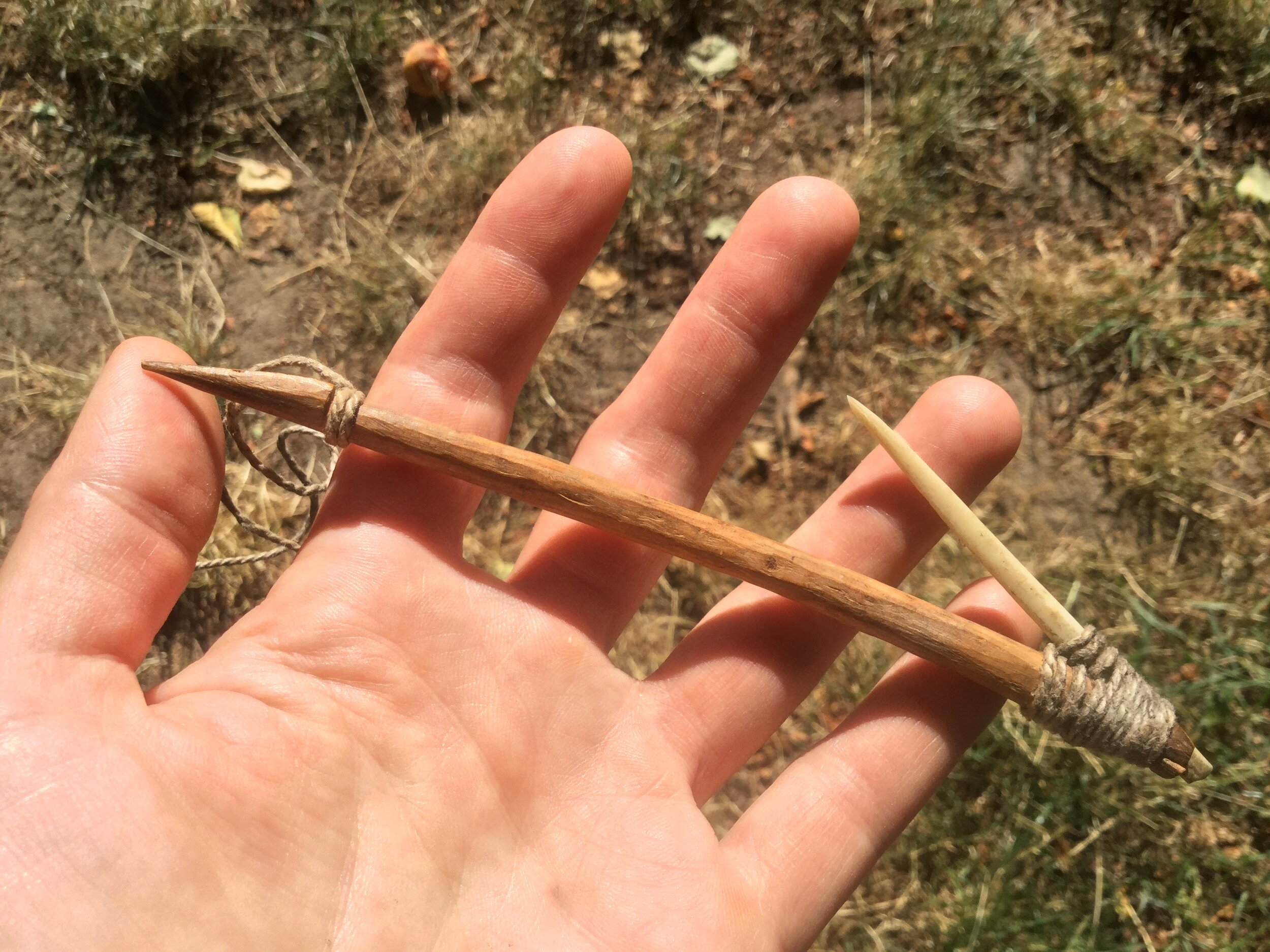Winter pithouses, often clustered along river and lake shores, were commonplace within the B.C. Interior for millennia.
Pithouses were constructed from thousands of years ago to as recently as the 1900s and built by digging a foundation in the ground before building
a wooden structural frame. The wooden frame was then covered with hides, bark, sod, piled sediment and tree boughs.
After the houses were abandoned, the roof would eventually collapse inward, leaving a distinctive oval-, circular- or rectangular-shaped depression in the ground. Developments within the last 50 years have adversely impacted, if not completely destroyed, many pithouses within the B.C. Interior.
Nevertheless, occasionally the undisturbed remains of winter pithouses are encountered by archeologists. In these instances, archeologists are sometimes afforded the opportunity to excavate a portion or all of a pithouse.
Ideally, the pithouses that remain throughout the province would be recorded and mapped, but not dug, as digging archeological sites essentially destroys the integrity of the sites.
Archeological sites are considered an important link to the past and site preservation is typically the preference.
However, if development is encroaching on the pithouse or if First Nations communities would like to learn more about a particular site, sometimes a pithouse will be excavated.
Similar to when people move houses in the present day, the majority of possessions within the pithouse were packed up and taken with the occupants when they moved into summer tents at the end of winter.
In some cases, tools and other seasonal items were stored within the pithouse until the following year.
Inevitably, a few items were inadvertently left behind. The forgotten or lost artifacts can help paint a vibrant picture of the past inhabitants of the house.
Much can be learned from excavating the remains of an abandoned house and archeologists approach this type of research with a well-organized plan and in consultation with local First Nations communities.
There are many ways to approach excavating a pithouse and it depends on the time available and the goals of the excavation.
If it is not feasible or possible to excavate the house in its entirety, it is common to excavate a trench across the centre of the house or to excavate half of the house.
In these scenarios, archeologists lay out a grid across all or a portion of the house in one-metre squares and then excavate each one-metre by one-metre unit in carefully measured increments.
The digging is precise and detailed and often completed with small hand tools and trowels.
A particular focus is placed on noting changes in the sediment layers. Artifacts are collected and recorded based on the location of the find from within each one-meter by one-meter unit.
Archeologists are looking for evidence of structural elements of the house to help explain how the house was constructed and organized.
As crews delve deeper into digging inside the pithouse, it can be determined how many times the house was occupied and rebuilt, how the interior of the house was organized (e.g., hearth locations, sleeping areas, entrance ways), how many people likely occupied the house and what types of activities were taking place and so forth.
Collected samples can highlight what type of foods were eaten by the occupants, what types of plant and animal resources were used and how long ago the house was inhabited.
Finding personal items that were left behind can be particularly revealing; for instance, uncovering a drilled shell pendant or a bone whistle tucked beneath a sleeping area.
Archeology provides a view into the past and excavating a family’s home from thousands of years ago provides a personal connection to past residents of the Southern Interior.
Phoebe Murphy is a Kamloops-based archeologist.













